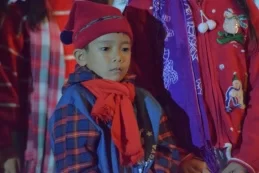In our science curriculum, before we formally discuss the main topic, students participate in a science investigation activity. Our third main topic dealt with the different inquiry skills scientists use to help them gather information.
To make it more exciting for my students and to give them something to look forward to, I announced to my class two days before the actual "activity day" that we would be doing a science investigation.
On that day, as I entered in the classroom, I found my students patiently waiting and I could sense that they were all excited for the science activity. The activity was entitled "Measure Up!" Measuring is one of the inquiry skills used by scientists and the objective of this activity was for students to be able to practice using a ruler or a tape measure to find the length and compare objects by length.
The students were grouped into pairs and these were the steps they followed:
1. Measure a desk inside the classroom.
2. Look for an object inside the classroom which is longer than the desk you first measured (the first group chose to measure a bookshelf for their longer object while the second group chose to measure the whiteboard).
3. Look for another object inside the classroom which is shorter than the desk you first measured (the first group chose to measure a book for their shorter object while the second group chose a pencil holder).
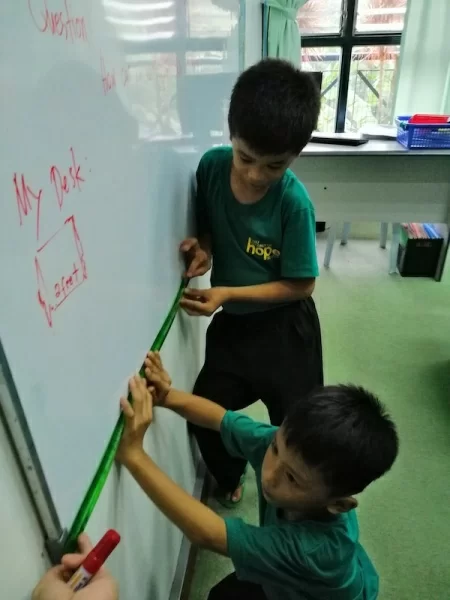 Collaborative learning was being developed and practiced by each student as they took turns in performing the science activity. The most surprising and rewarding part for me was when they confidently shared their results. Group one shared that the book measured 1 foot and concluded that it was shorter than the desk. The desk measured 2 feet. The bookshelf was the longest with a measurement of almost 6 feet.
Collaborative learning was being developed and practiced by each student as they took turns in performing the science activity. The most surprising and rewarding part for me was when they confidently shared their results. Group one shared that the book measured 1 foot and concluded that it was shorter than the desk. The desk measured 2 feet. The bookshelf was the longest with a measurement of almost 6 feet.
Another inquiry skill that they used during the activity was communication. In communicating, students needed to record their results through writing and drawing. At the end of the investigation they discovered that the inquiry skill "measure" helped them find and compare the lengths of objects.
After the excitement from this activity I am more motivated to plan for other activities that help the students become more independent (and excited!) in their learning.
The Sun
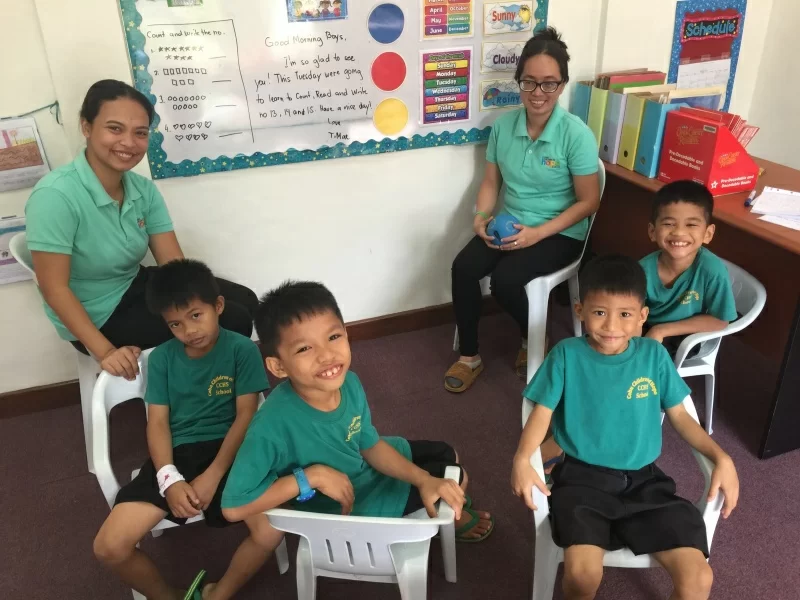
Every day at Cebu Children of Hope School (CCHS) we start our day with something called Morning Meeting. This is a "soft landing" time for our children which enables them to calm their bodies, practice social skills, and prepare for a great day of learning. Part of every Morning Meeting is a time for kids to share. Sometimes the question is about what they did over the weekend, sometimes the question is related to the day's lessons.
Teacher Chery and Teacher Mae lead the Morning Meeting for Level A1, our four energetic kindergarteners. Here is a conversation they recently had in their classroom, with the question relating to the day's science lesson.
--------
Teacher Mae asked, "Where do you think the sun will go during the night?"
Student 1: The sun goes under the sea at night because it goes under the line (he means the horizon).
Student 2: The sun is on the ground teacher.
Student 3: Hmmmmmm... the sun will go to bed and sleep.
--------
Even with their young minds, these children have great ideas that even surprise us adults at times. Each child at CCHS is surrounded by great teachers who have dedicated their lives to help enlighten and empower their students so they can understand everything from where the sun goes at night to understanding how the God who made the sun loves them unconditionally. Thank you for supporting the work that is happening every day at CCHS!
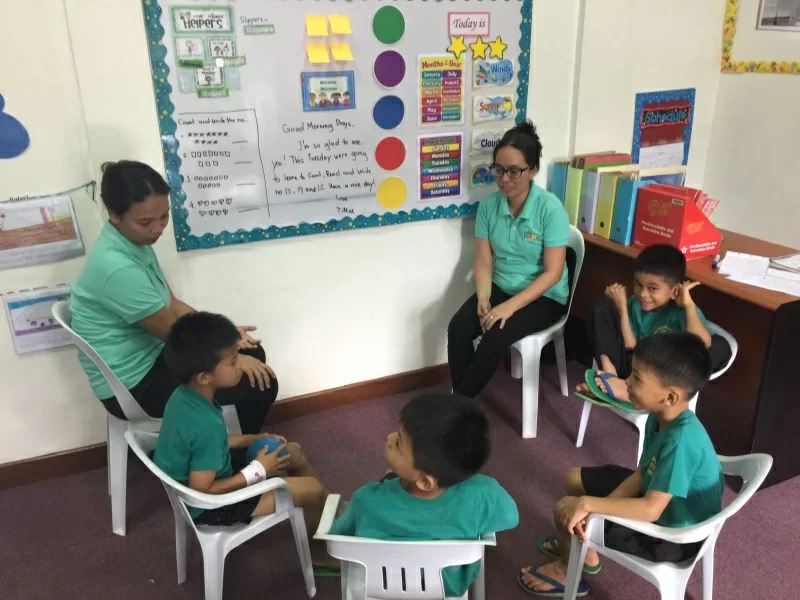
Pag Ibig Award
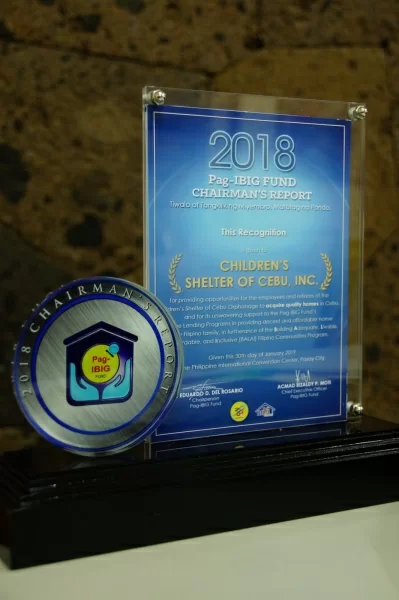
Recently CSC received an award from the Pag-IBIG Fund, the Philippine government financial agency that is handling the mortgages for our 60 employees who are receiving Habitat for Humanity homes. The award recognizes the role of CSC in this project on behalf of our employees, who are all automatically members of Pag-Ibig.
This award is a testimony to the work of Paul Reasoner, who raised funds to help alieviate the financial burden for our workers and make their mortgages more affordable for them. We are an organization that values our employees and we have been concerned that they have decent housing. Many have lived in sub-standard houses prior to this project, and would not have had even the hope of having their own house and lot without the cooperative efforts of CSC, Pag-IBIG Fund and Habitat for Humanity. This award reflects that concern of CSC, and the partnership of the agencies who are all dedicated to getting deserving people into safe and affordable housing.
Pastor Fred Verdeflor, who is the husband of our CSC nurse Arlyn and President of the CSC Happy Homes homeowners association, went to Manila to accept the award on behalf of CSC.
Life Cycles
All living things undergo different stages during their life. Some living things start as a seed, pollen, or spore. Other organisms such as animals start as a live young or an egg that sometimes needs to undergo the process of metamorphosis which completely changes their appearance.
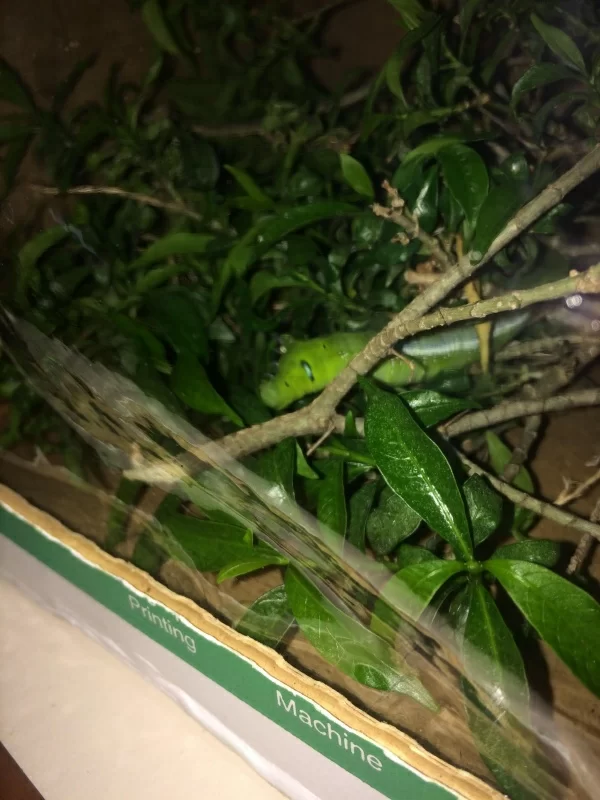 In my Level B2 science class the students were able to witness the process of metamorphosis. We started in the caterpillar stage where the students saw how many leaves the caterpillar consumed. After several weeks it became a pupa. The students were very eager to look at the changes every day though it stunk when they opened the lid of the box. The day finally arrived when the caterpillar became a moth! We all went outside and set the moth free. The students were so excited to be a part of this process!
In my Level B2 science class the students were able to witness the process of metamorphosis. We started in the caterpillar stage where the students saw how many leaves the caterpillar consumed. After several weeks it became a pupa. The students were very eager to look at the changes every day though it stunk when they opened the lid of the box. The day finally arrived when the caterpillar became a moth! We all went outside and set the moth free. The students were so excited to be a part of this process!
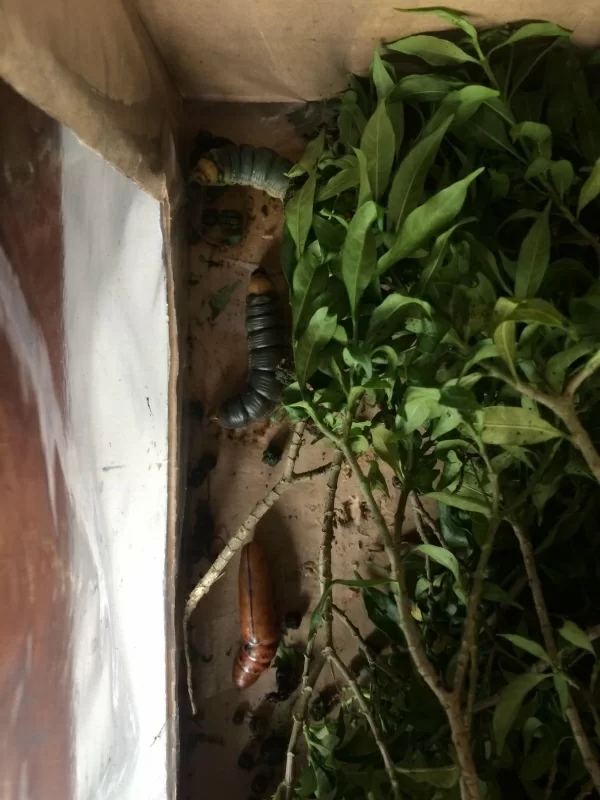 The whole activity took a lot of time and dedication but the result was very fulfilling. The students were able to learn not just how metamorphosis works but also about patience, perseverance, and having a love for nature.
The whole activity took a lot of time and dedication but the result was very fulfilling. The students were able to learn not just how metamorphosis works but also about patience, perseverance, and having a love for nature.
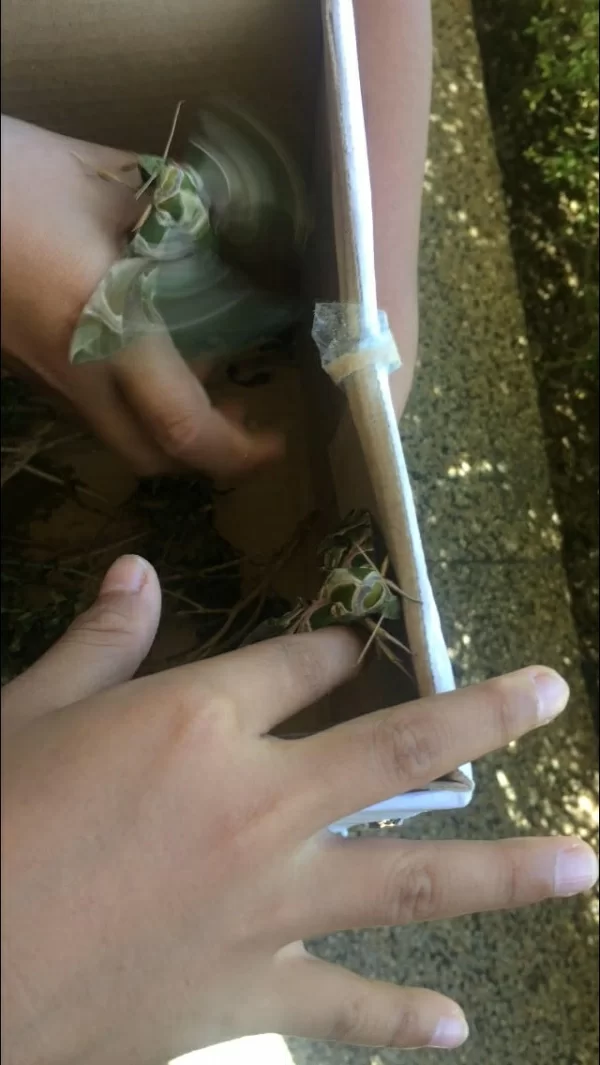
Christmas 2018
Click to see pics of the different activities at CSC this Christmas. Our generous donors allow us to give lots of fun times to the children. God bless you all.
Junel's Box 2018 - Inayawan, Cebu City
